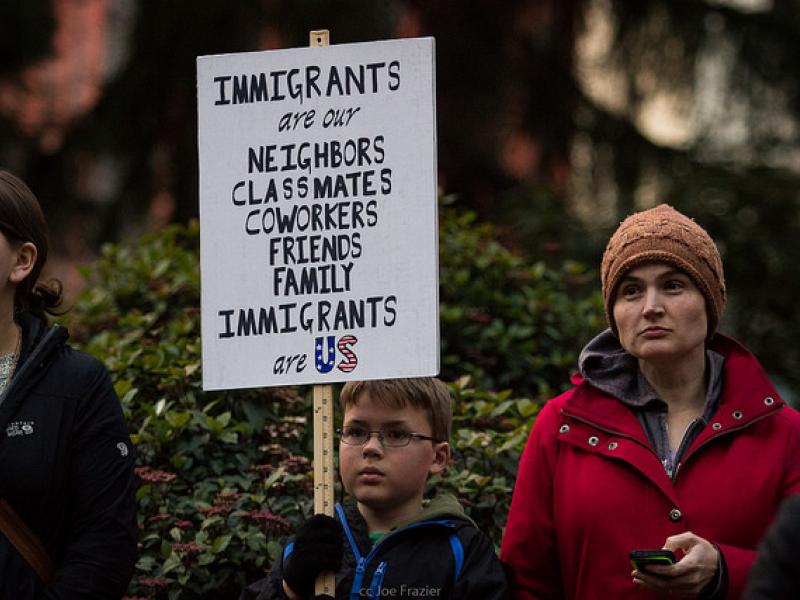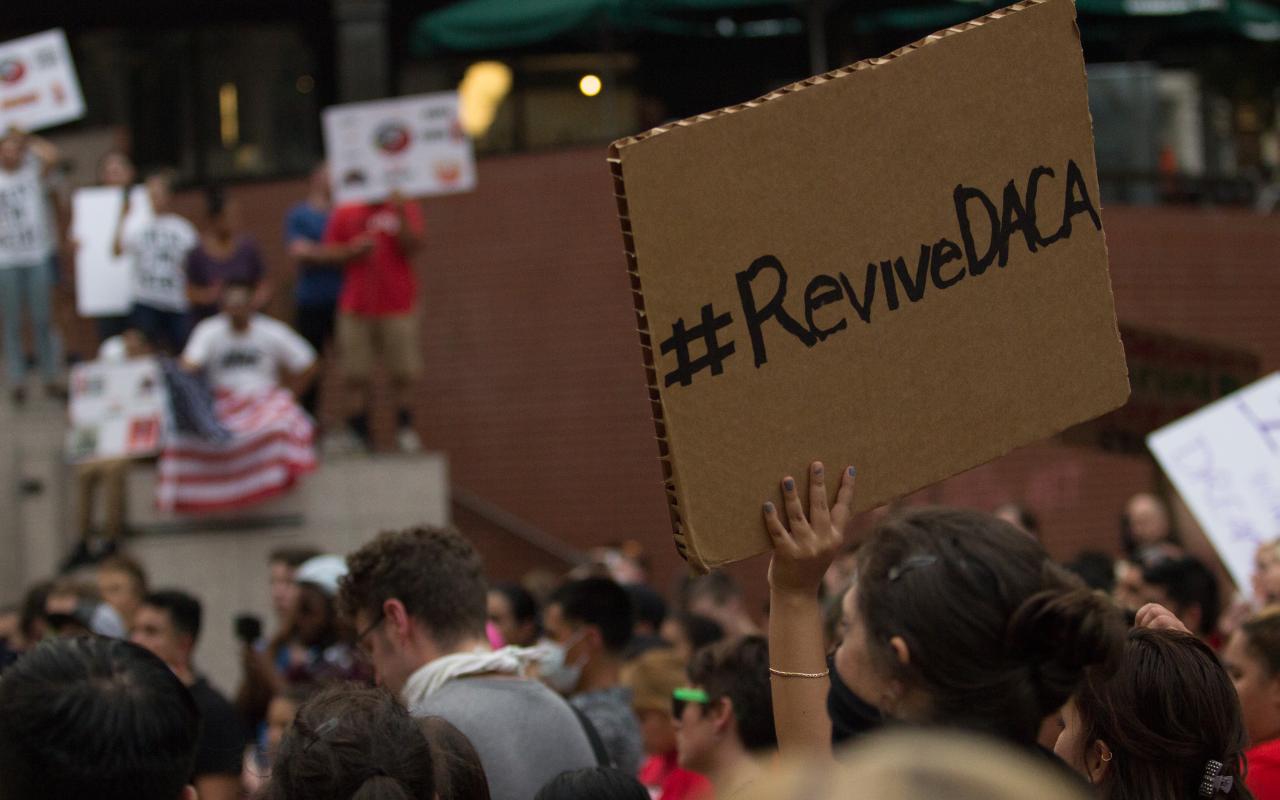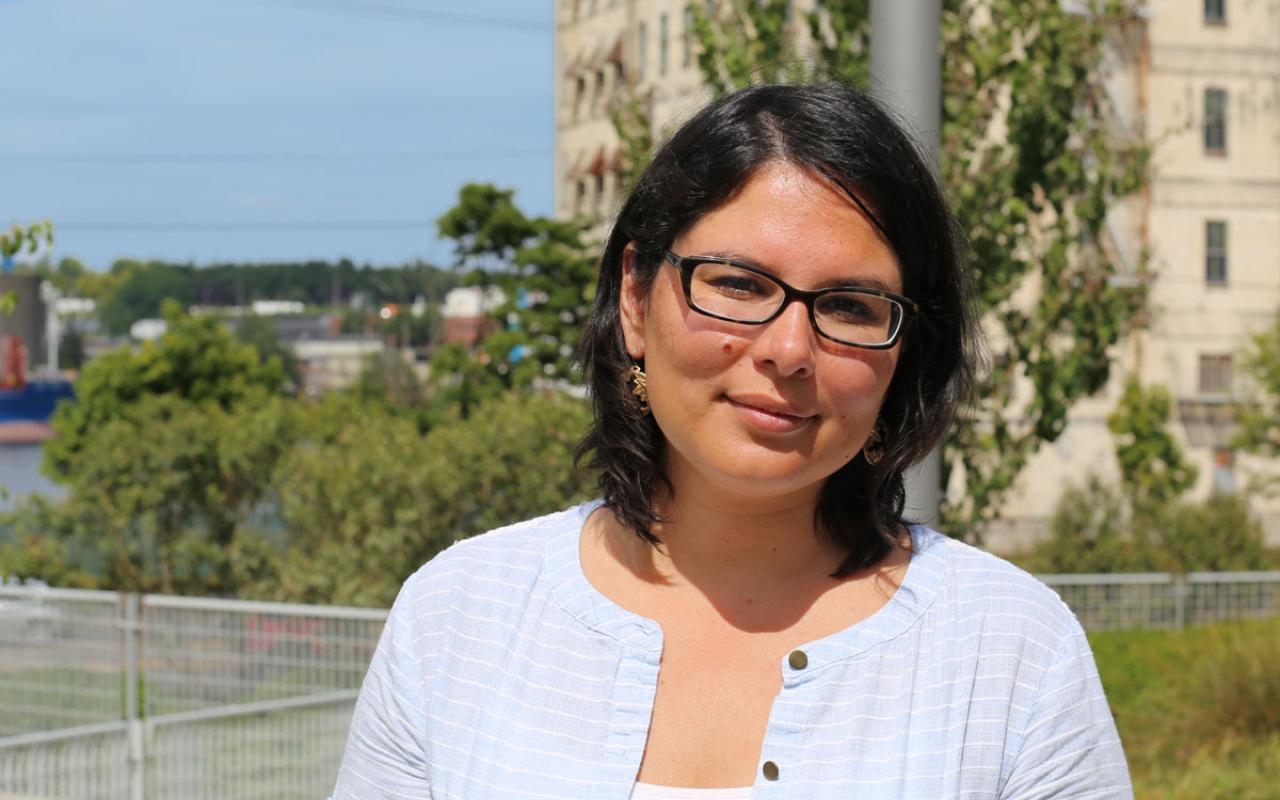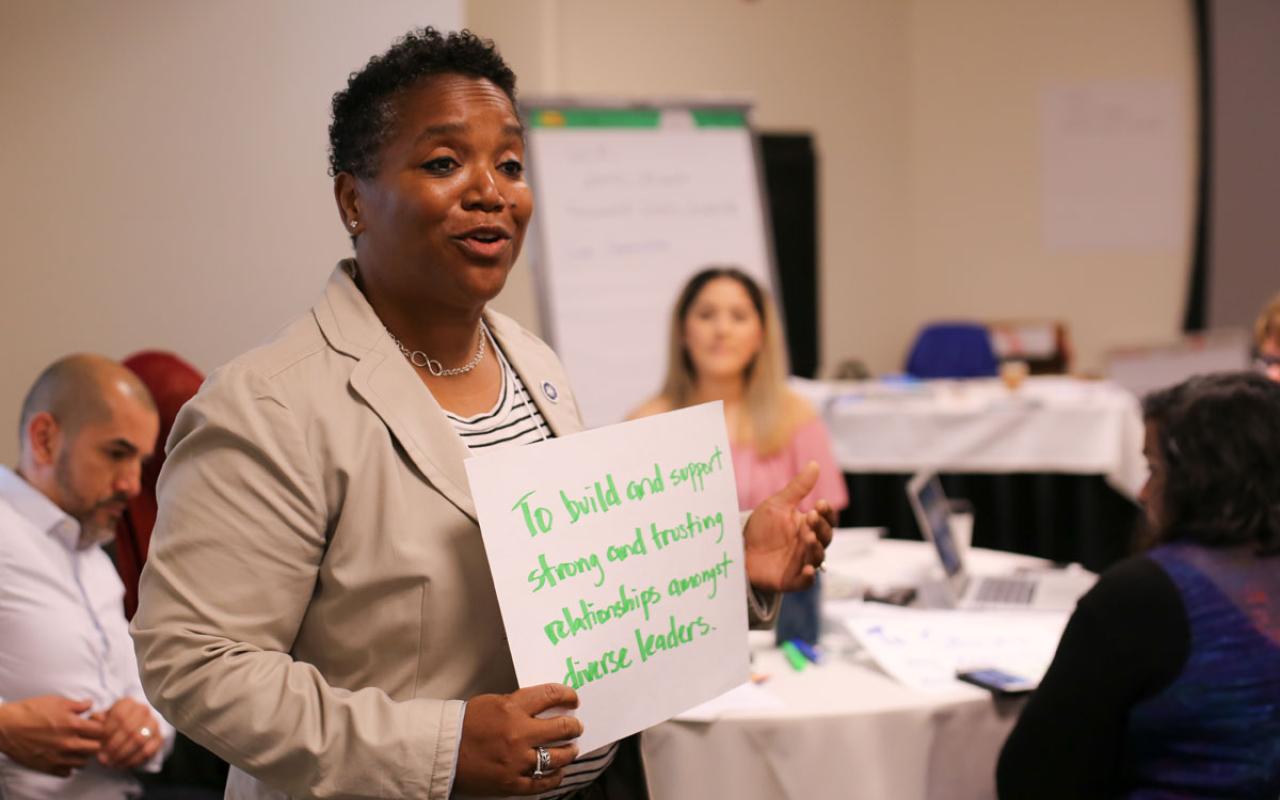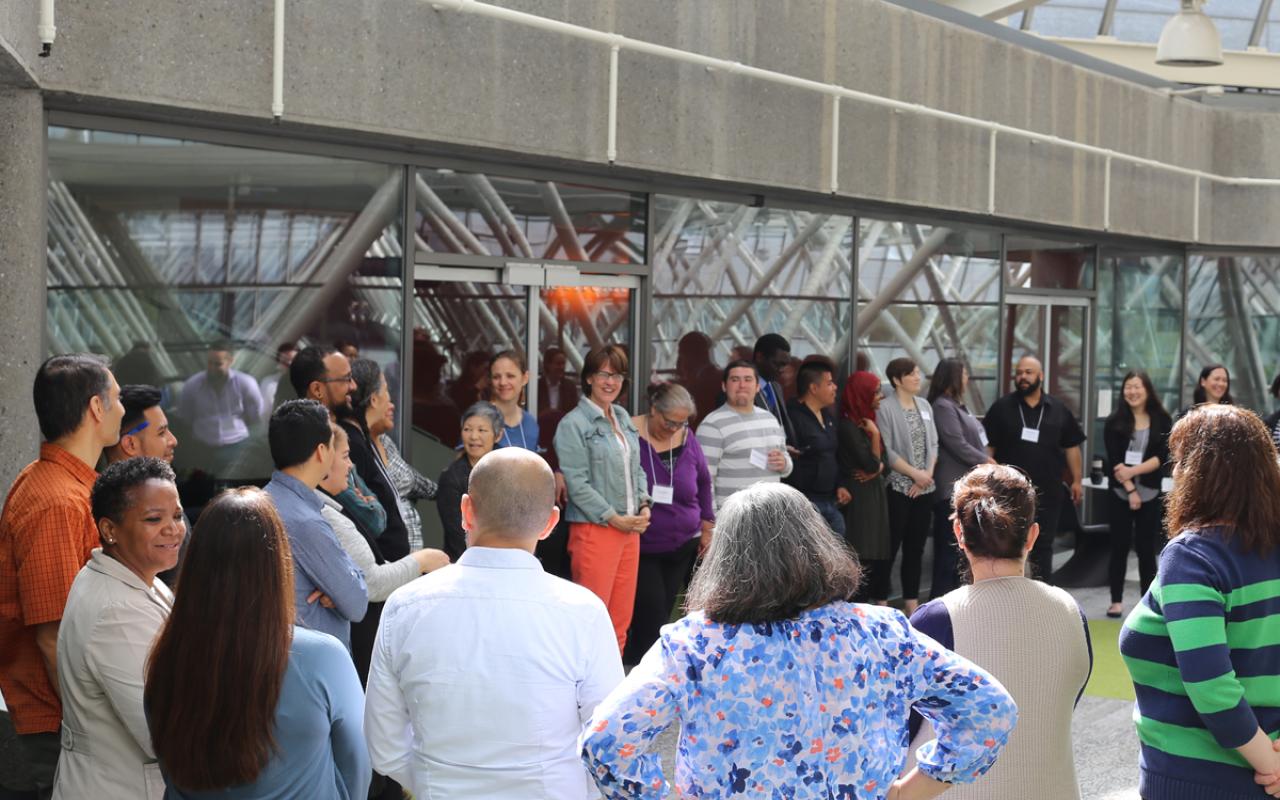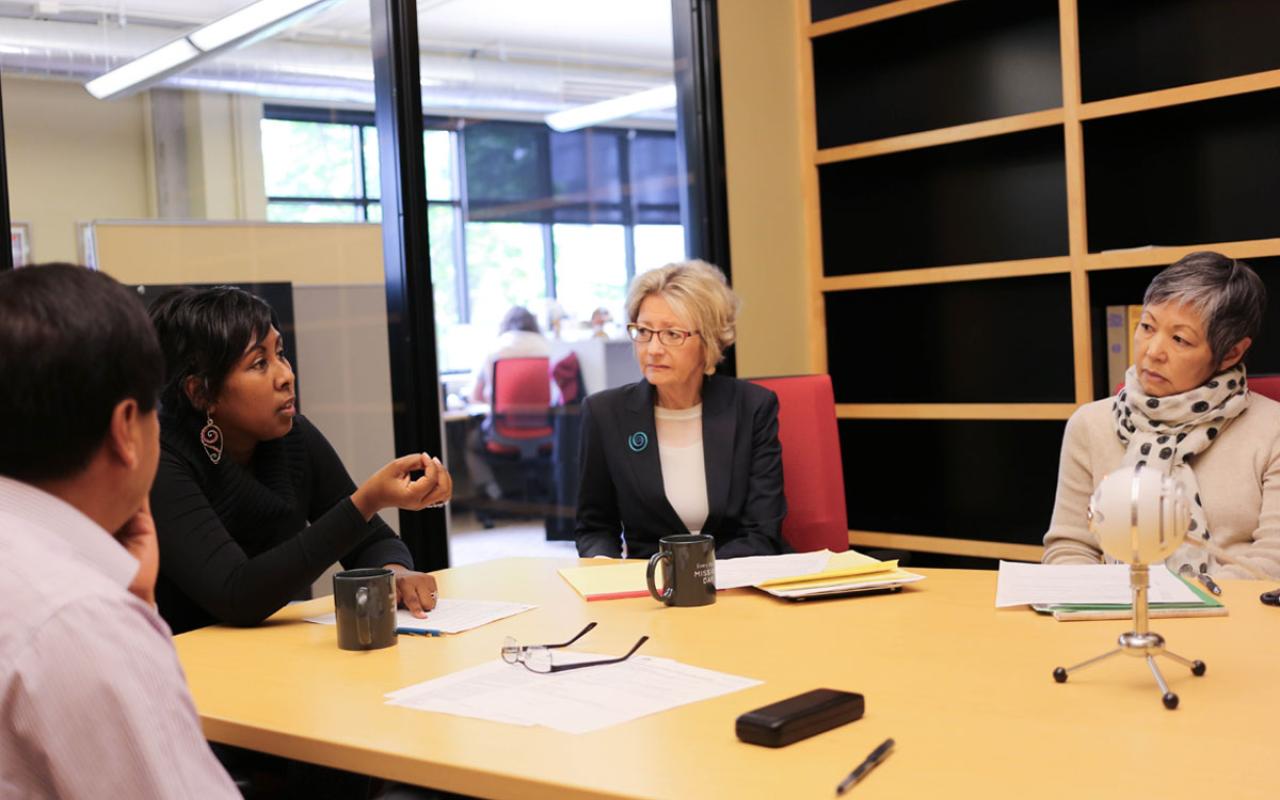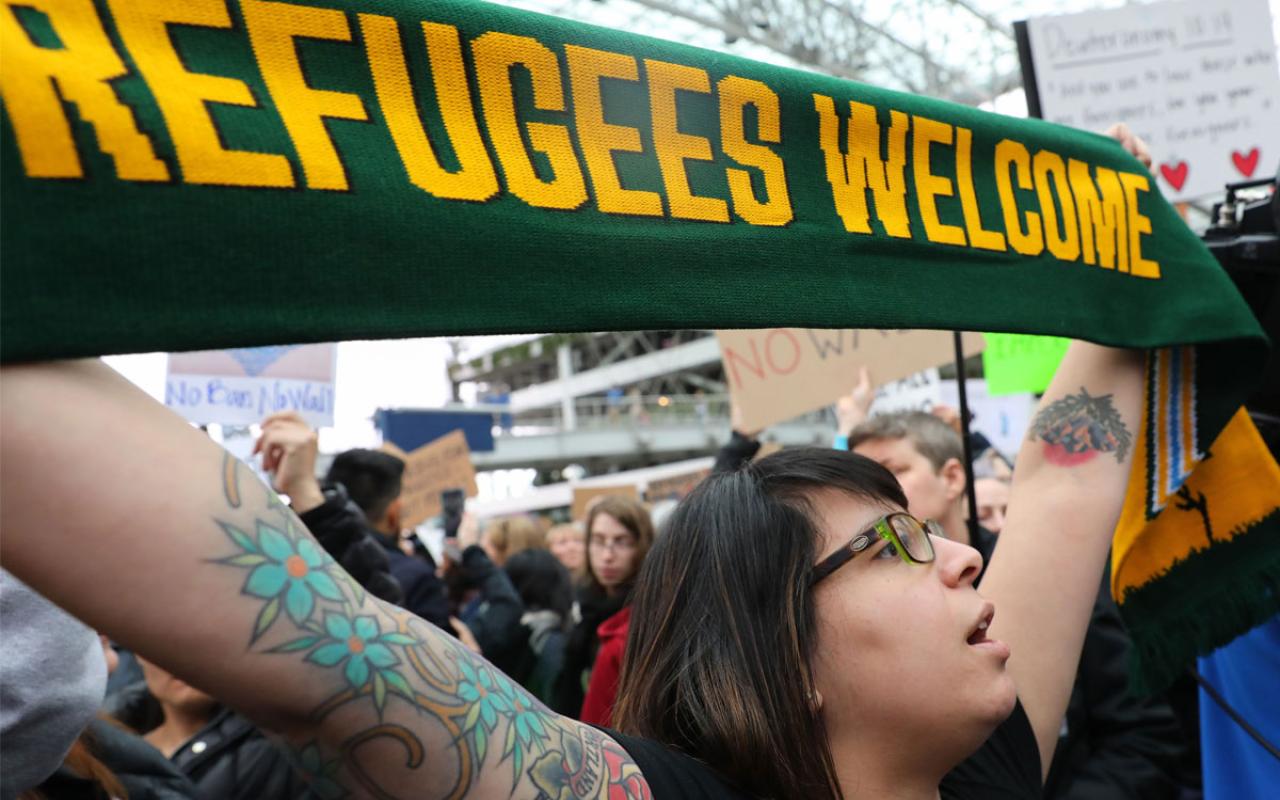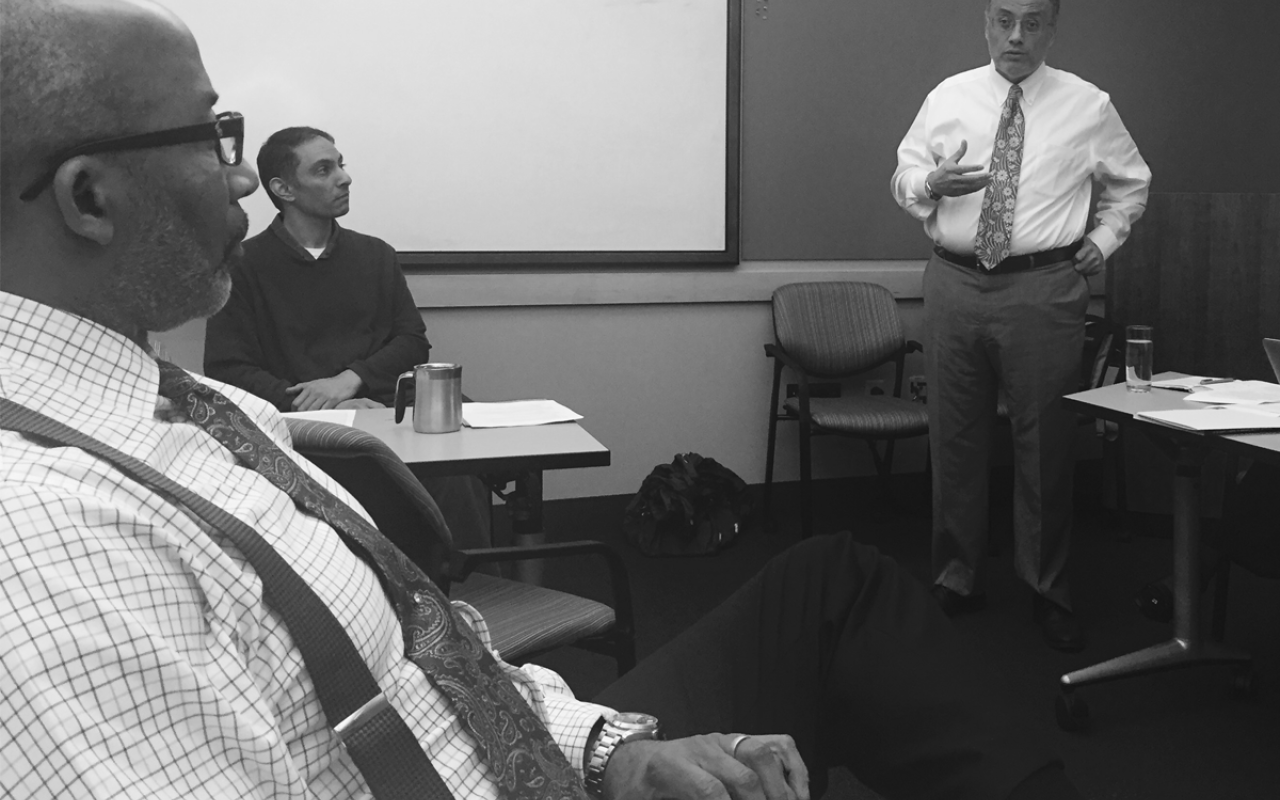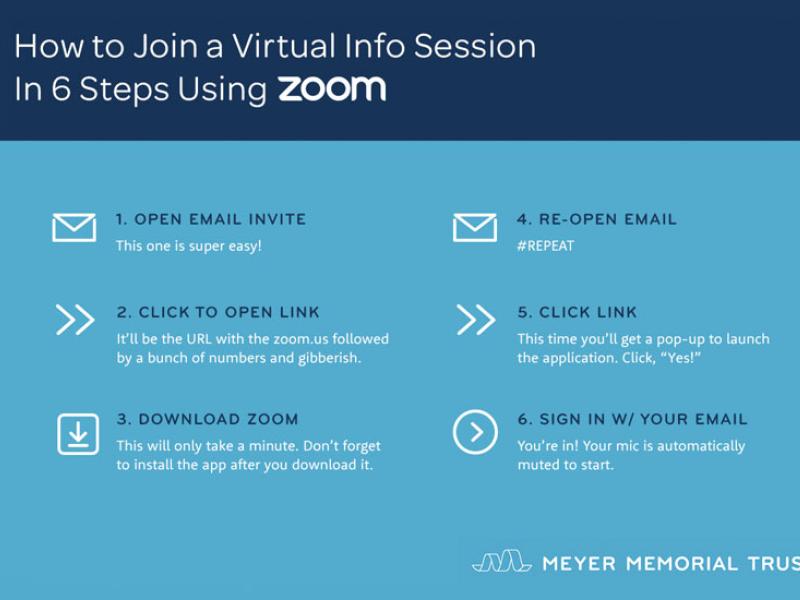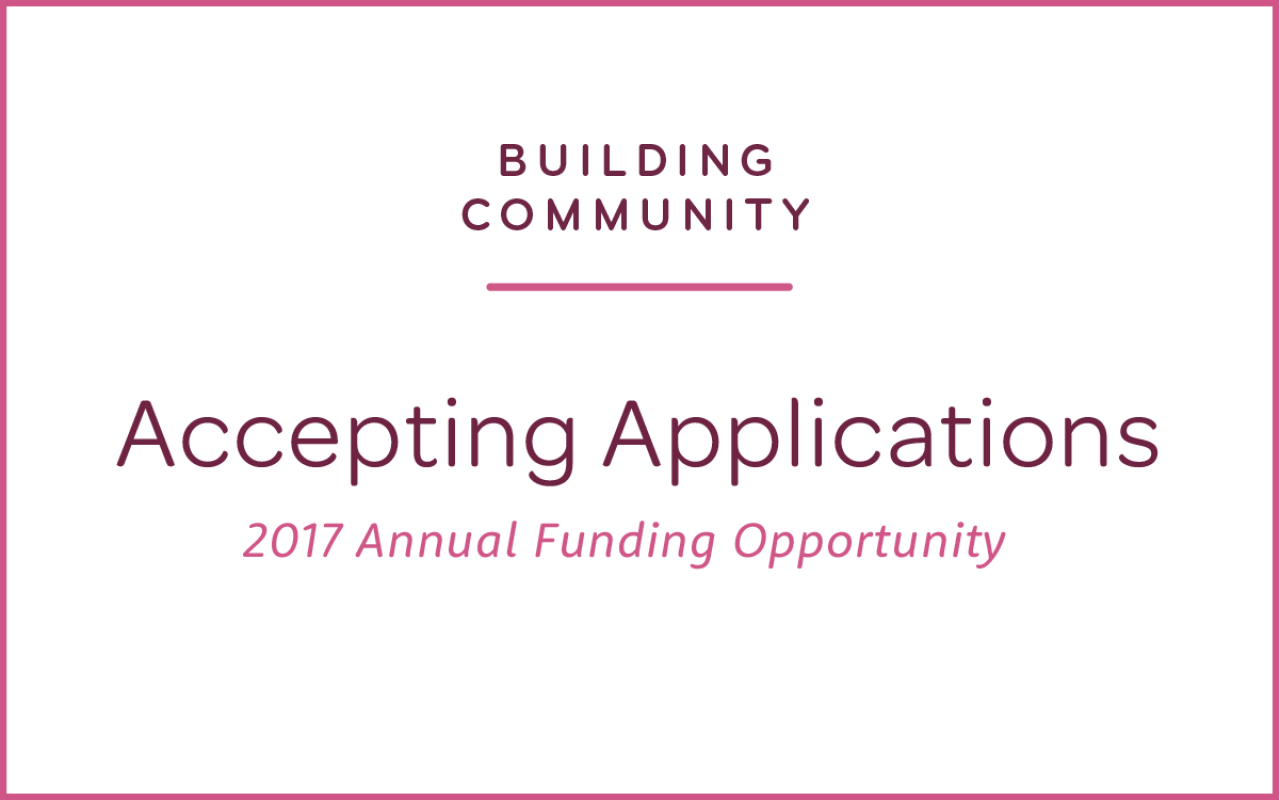Recognizing meaningful work
I am a dedicated day hiker. Last year I logged more than 300 miles. I am on a trail most weekends and have been known to tap vacation days to get in a few mid-week summer hikes. The mountains, the gorge, the coast, the desert ... anywhere I can be enveloped in nature and solitude. The vast majority of the time, I am invigorated, motivated, at peace and in awe. But I admit that occasionally it feels like a slog. Will I ever reach the top of the ridge? Will the trail ever end? Will the rain ever stop? Somehow I press on and am rewarded with a breathtaking view, a sense of accomplishment and feeling thankful that I didn’t give up.
These feelings have followed me off the trail the past couple of rough months. As I began composing this blog announcing our July and August grant awards, I stepped out of the slog to feel a renewed sense of hope, determination and gratitude. In the midst of anger and grief over the continued blatant racism and oppressive national policy environment, I am humbled and inspired by so many in our communities who are taking a stand for justice, getting involved, reaching out to understand and support each other, and innovating and advocating to build a flourishing and equitable Oregon. Many of you did amazing work during Oregon’s legislative session and in local communities to help pass policies that move us closer to equity. You are working within your organizations and in your communities to meaningfully advance diversity, equity and inclusion. And you are lifting up and celebrating the diverse strengths and beauty of the many communities and people who call Oregon home. I am immensely grateful.
We see your work, determination and progress, and we continue to explore how we can best partner with you every day. Meyer’s 24 summer grant awards, totaling $1.5 million, showcase those meaningful efforts. I am happy to share these highlights of funding opportunities and collaborations with the field.
Oregon Immigrant and Refugee Funders Collaborative/Meyer Grants
Our community’s response to the Oregon Immigrant and Refugee Funders Collaborative has been inspiring. This collaborative — a partnership of MRG Foundation, Collins Foundation Oregon Community Foundation and Meyer — is designed to address crucial and time-sensitive issues facing immigrants and refugees. In July and August, Meyer made five awards totaling $213,109 through this partnership:
-
$100,000 to Causa of Oregon, lead applicant for a collaboration with Innovation Law Lab and Lewis & Clark Law School, to support the Immigrant Inclusion Plan, which will provide the infrastructure needed to mesh community-based organizing, immigrant defense work, immigrant rights policy development, and public discourse on immigrants in Oregon to affect inclusion throughout the state.
-
$19,000 to Centro Cultural de Condado de Washington to support the Esperanza Deportation Relief Fund, which offers financial assistance to families that suddenly lose an income-earner in the household.
-
$19,109 to Bienestar to provide assistance to families that have been impacted by anti-immigrant policies and the increase in anti-immigrant sentiment.
-
$25,000 to Northwest Employment and Education Defense Fund to support efforts to protect low-wage contingent and immigrant workers from exploitation.
-
$50,000 to Portland Community College Foundation to support the launch of a DREAM center at PCC Rock Creek Campus' Multicultural Center, which will help undocumented students fulfill their dreams for postsecondary education.
You can find out more about the collaborative and how to apply here. And be sure to check out our awards database to learn about the other ways Meyer is supporting the important work of these and other grantee organizations working for immigrant and refugee rights.
Portfolio and Meyer-Directed Grants
Over these past two months, a handful of grants were made through our Building Community, Equitable Education, Healthy Environment and Housing Opportunities portfolios, as well as other Meyer-directed and mission-aligned awards.
Two technical assistance grants were made through our Building Community portfolio:
-
$18,500 to PHAME Academy to support the transition of executive leadership of this organization serving adults with intellectual and developmental disabilities.
-
$19,250 to Willamette Valley Development Officers for internal diversity, equity and inclusion assessment and planning.
One award was made through our Equitable Education portfolio to Foundations for a Better Oregon for continued support of The Chalkboard Project ($630,000). Meyer has been a long-standing partner in this philanthropic collaborative working to unite Oregonians to make our public education among the nation's best.
Through our Healthy Environment portfolio, Meyer provided:
-
$100,000 to the Portland Harbor Community Coalition to build capacity and develop tools for impacted communities to benefit from Portland Harbor Superfund cleanup and redevelopment. Earlier this year, my colleague Kelly House wrote a great blog about Meyer’s prior investment in this coalition, its impact and the personal stories of some of its members — be sure to check it out.
-
$15,000 to the Oregon Environmental Council to organize partners in developing a community-based transportation plan for the Portland area that focuses on emerging technologies to ensure optimal mobility and environmental health benefits for local residents, particularly benefits for lower-wealth neighborhoods. We see this as a timely opportunity to bring community voice into local transportation planning and Department of Environmental Quality rulemaking to ensure that lower-income communities are not negatively impacted or left behind.
-
$50,000 to Craft3 to pilot a food and farm business loan program that supports economic, ecological and family resilience outcomes and helps strengthen the Pacific Northwest regional food system. The program will prioritize serving communities of color and indigenous communities and Tribes.
From our Housing Opportunities portfolio, we made a $49,000 award through our Affordable Housing Initiative to Earth Advantage to promote adoption of the Life-Cycle Cost Analysis tool to support more sustainable and cost-effective affordable housing.
Other Meyer-directed awards included $252,535 to Philanthropy Northwest to support a second cohort of Philanthropy Northwest Momentum Fellows to prepare professionals from underrepresented communities for successful careers in the philanthropic sector. We also awarded a $145,000 capacity building grant to the Native American Youth and Family Center.
A complete list of our July and August awards can be found here.
In other news:
2017 Annual Funding Opportunity Update
I have heard from many folks lately wondering where we are in our 2017 Annual Funding Opportunity decision-making process. Our portfolio teams will soon complete more than 200 site visits and are beginning to develop funding recommendations. We are excited about the rich opportunities to partner with so many organizations that share our vision of a flourishing and equitable Oregon! The vast majority of funding recommendations and decisions through this program will be made in October, but this year a small percentage of decisions, primarily for technical assistance grants, will be made in August and September. Stay tuned — we will be announcing all the 2017 Annual Funding Opportunity awards in our November newsletter. Are you signed up to receive our newsletters? It just takes a sec!
You might also want to put a note in your calendar that our 2018 Annual Funding Opportunity will once again be open for applications mid-March through mid-April. More details to come.
Open Funding Opportunities
While we round the bend on the 2017 Annual Funding Opportunity awards and begin reviewing proposals to our recent Affordable Housing Initiative Systems Alignment: Housing+Services RFP, we are pleased to offer an additional opportunity to apply for funds:
-
Oregon Immigrant and Refugee Funders Collaborative. Organizations working to address critical and time-sensitive issues facing our community’s immigrants and refugees can continue to apply for funds through this funder collaborative. No deadline. Access the application through any of the participating funders (MRG Foundation, Collins Foundation, Oregon Community Foundation and Meyer), or click here.
Finally ... Not to Miss!
Meyer has stepped up the strategic use of our voice to take a stand and advocate for mission-critical issues. We have also prioritized funding work that leads to policy and systems changes, and we have created a specific opportunity to apply for funding for collaboratives, coalitions and networks working on systems change. You have provided a lot of positive feedback about these changes ... and you’ve asked a lot of great questions!
We are excited to support two upcoming opportunities for nonprofits and funders to learn more about advocacy, lobbying and working in and resourcing networks.
-
Critical Connections & Critical Mass: Supporting Movement Networks for Change with Elissa Sloan Perry of Management Assistance Group, in Portland on Sept. 19. Grounded in the belief that “to change everything it will take everyone,” Meyer is also sponsoring this workshop that will explore what it means to work collaboratively in coalitions and movement networks and the implications of resourcing this strategy. Willamette Valley Development Officers is hosting, and Meyer, along with other Oregon funders, will be participating. Scholarships are available. You can find out more and register here.
-
Alliance for Justice is offering two advocacy and lobbying workshops in Portland on Sept. 28. At Meyer, we believe that all nonprofits and funders have a responsibility to understand the public policies and inequities that are connected to their mission and have a role to play in advocating for change. We are excited to be sponsoring two upcoming Alliance for Justice workshops on advocacy and lobbying, one for nonprofits hosted by Nonprofit Association of Oregon and one for funders hosted by Grantmakers of Oregon and Southwest Washington. I look forward to seeing you there!
And with that, we wish you a smooth transition into fall and offer our continued appreciation for all the energy you are contributing toward making Oregon a welcoming place where everyone has true opportunity to thrive.
See you on the trail.
— Candy
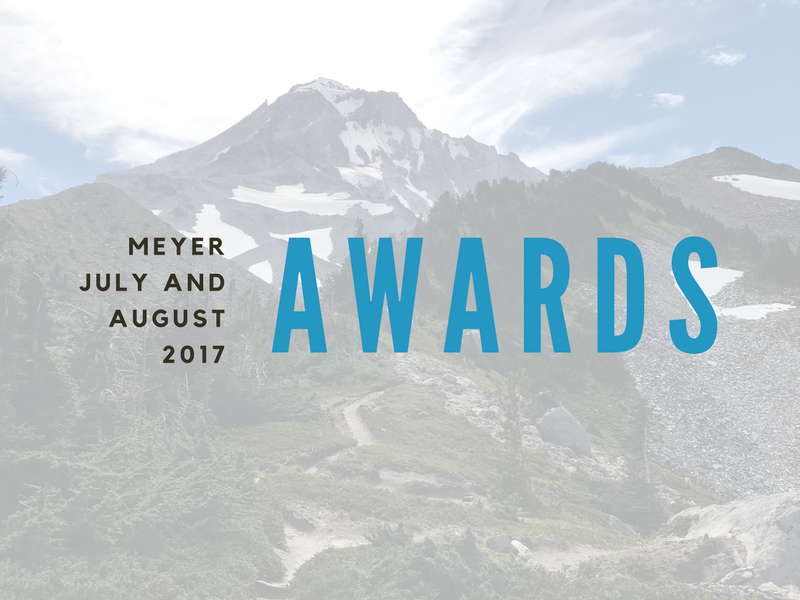
Summer 2017 Awards
Close card stack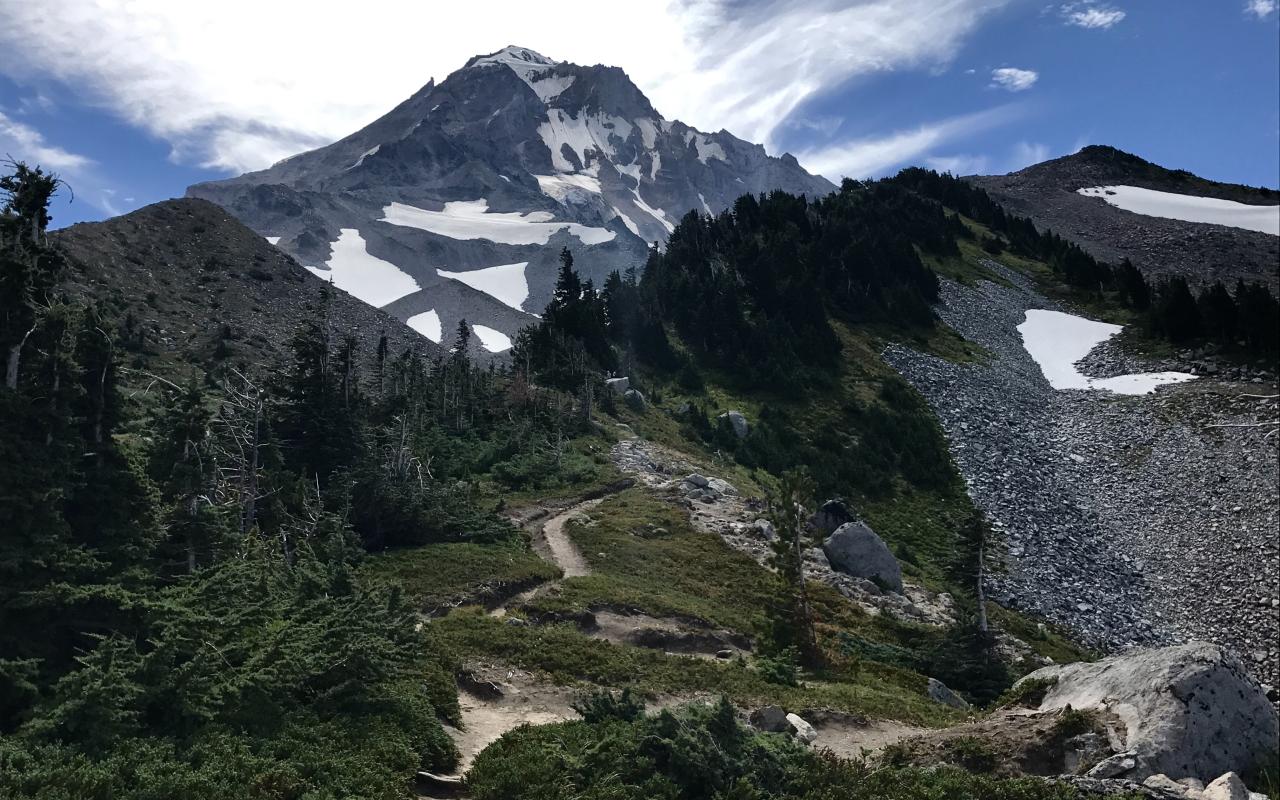
The view along McNeil Point Trail in Mt. Hood National Forest and Candy’s favorite Oregon mountain hike. Photo courtesy of Candy Solovjovs




